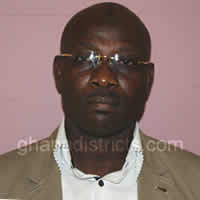IMPLEMENTATION ARRANGEMENT AND ANNUAL ACTION PLANS
Introduction
Development plans, which are not executed, or are ineffectively implemented, are next to nothing and they become a total waste of the scarce financial resources, time and energy. In consonance with the Local Government Act, 1993 (Act 462) which designates each Assembly as the District Planning Authority, the BAB Municipal Assembly therefore has the mandate to oversee the formulation, implementation, monitoring and evaluation of this development plan. As with other plans, this plan is beset with its fair share of constraints such as inadequate human, material and financial resources.
The tendency is for the District Assembly to depend on the resources from external bodies such as the Central Government, Non-Governmental Organisations, bilateral and multi-lateral donor agencies which may either delay or not be forthcoming thereby leading to plan implementation failure. To overcome such unfortunate situation, it is strongly recommended that resources available in the Municipality be effectively and efficiently mobilised and utilised as well as adopting other strategies outlined in Table 4.6. The improvement of revenue generation and the judicious use of the District Assembly resources coupled with private sector initiative and community participation are important for effective plan implementation, monitoring and evaluation.
Community involvement, especially in the areas of financial contributions and communal labour, is essential. The idea is that local human, physical and financial resources are to be mobilised and managed properly for sustainable development. External sources of funds should be seen as auxiliaries to facilitate local efforts.
Plan Implementation Arrangements
The implementation of the plan (as detailed out by the Annual Action Plans in Tables 5.1-5.4) entails the involvement of all development actors, both inside and outside the Municipality.
Administrative and Institutional Arrangement
For effective plan implementation, it is imperative to identify the various institutional and administrative issues to be dealt with. This will ensure efficient role casting, establishment of procedures and structures, which are necessary for the attainment of the development objectives. Detailed specific roles of the various stakeholders involved in plan implementation are indicated in table 30 below.
Institutional Arrangement
To ensure effective implementation of the medium term development plan, the Municipal Assembly intends to effect a comprehensive institutional and human capacity building for the various stakeholders who will be the vehicle for the implementation of the programmes and projects. The Municipal Assembly would resource the decentralized departments that are currently in operation in the Municipality through the provision of refresher courses, workshops and seminars, as well as motivation to raise their technical competence and commitment.
The two area councils, as well as the 15 unit committees will also be established and resourced to perform their constitutional roles under Local Government Act, 1993 (Act 462). The area councils are required to assist the District Assembly at grassroots and the sub-districts levels in the management of the Municipality.
Administrative Arrangement
The Municipal Assembly will strengthen coordination among the various departments, governmental and non-governmental agencies and also integrate and synthesis their priorities into the Municipality Development Framework. This will be realized through involvement of MDAs in the project identification, selection and implementation, mid-year plan review workshop, departmental meetings and durbars.
To ensure increased community participation in plan implementation, the Municipal Assembly will work towards enhanced collaboration between the Central Administration and the Traditional Authority. At the local level, the traditional authorities, in collaboration with sub-district structures, play vital roles in the development planning process. Thus, the Municipal Assembly will assist the Traditional Council to settle all the protracted chieftaincy and land disputes to enable the chiefs to concentrate on their development function.
The Municipal Assembly will intensify the tax awareness and education campaigns in the Municipality to sensitize the people on the essence of paying taxes. Revenue collectors will be resourced, whilst capacity building seminars will be organized for them. Targets will be set for revenue collector and achievers warded to serve as incentive, whilst sanctions will be instituted against non-achievers. The People Assembly concept will be given further boost by increasing if frequency from once a year to two. This presents a better platform for both the District Assembly and the general public to inform and be informed and educated on District Assembly and government policies to enhance transparency and accountability.
Annual Action Plans 2014 – 2017
The Annual Action Plans for this Medium Term Development Plan are presented in Tables 5.1- 5.4. The annual plans detail out the various activities, time frame, location, output indicators, annual budget, and implementing agencies. The activities in the plan are phased into Annual Action Plans, as shown by the time frame. The criteria for selection of activities / projects to start from the first year are:
a. Projects that will generate income for the District Assembly;
b. Projects that involve long implementation period;
c. Projects that will improve the socio-economic status of the majority of the people especially the vulnerable;
d. Projects that will create enabling environment;
e. Projects that will enhance capacity building; and
f. Projects that will enhance the implementation of subsequent projects.
For some activities, the same physical inputs will be used. For example, the same equipment can be used to undertake activities such as awareness creation to enable farmers to adopt improved agronomic practices, public education on civic responsibility, and create awareness and train communities on maintenance of water facilities. This implies that some equipment and materials need to be centralised at the District Administration for use by the various development partners. This would help minimise cost.
The total budget for the planned activities including contingency is GH¢ 26,893,955. The budget for the first year is GH¢7,674,575.00. The sources of the cost estimates of various activities/facilities include:
Public Works Department (PWD)
• Department of Feeder Roads Ghana Highway Authority
• Regional Health Administration
• Ministry of Food and Agriculture
• Ministry of Education
• Community Water and Sanitation Agency; and
• District Administration.
IMPLEMENTATION, MONITORING AND EVALUATION AND COMMUNICATION STRATEGY
Introduction
The recognition that resources are limited and the ever-rising expectations from citizens for better services are enough reasons for the district to find most cost effective options to meeting these demands with the available resources. This chapter focuses on the processes involved in conducting Monitoring and Evaluation and disseminating and communication strategy during the implementation of the DMTDP 2018-2021.
Purpose of the M&E Plan
The Monitoring and Evaluation (M&E) arrangement is primarily meant to institute an effective and efficient system for tracking the progress of programmes and projects in the District Medium Term Development Plan (2018-2021) by the DPCU and other stakeholders. It provides a clear direction on how specific activities within the MTDP will be measured. Aside providing useful lessons to aid in programme / project implementation, it would also enhance stakeholders’ accountability
Monitoring
Monitoring is the systematic process of collecting, analyzing and using information to track a programme’s progress toward reaching its objectives and to guide management decisions. Monitoring usually focuses on processes such as when and where activities occur, who delivers them and how many people or entities they reach.
Monitoring also ensures that, at any given stage of a project, the required inputs are delivered on time, used as intended and is producing the desired results. Since plans are affected by uncontrollable situations such as socio-economic changes, political climate and international relations, it is necessary that they are constantly monitored and adjustments made accordingly. The monitoring scheme is designed for the annual plan. In the scheme, three (3) activities occur:
(i) Monitoring activities cover the implementation period.
(ii) On-going evaluation occurs at specific points within the implementation phase.
(iii) Terminal evaluation occurs at specific end of the project implementation
Monitoring Matrix
The Monitoring and Evaluation Matrix shows the linkage of the Medium Term Development Plan to the Goals of the NMTDPF 2018-2021. The matrix provides a format for presenting the input, output, outcome and impact indicators of each of the MTDP objective.
The matrix has the Goals of the NMTDPF 2018-2021 as well as the indicators, indicator type and the baseline for 2017. Others are the targets for 2018, 2019, 2020 and 2021, the data disaggregation, monitoring frequency and whose responsibility it is to supply the data. The indicator type, be they input, output, process or outcome ones are all stated. The monitoring matrix for the BABMA is presented in the table below:
Date Created : 5/10/2023 12:00:00 AM





